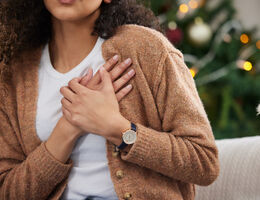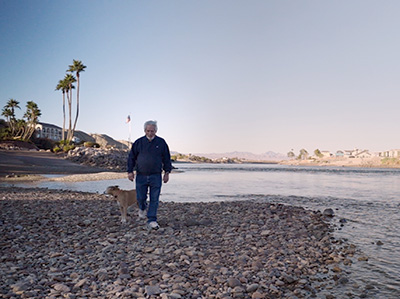
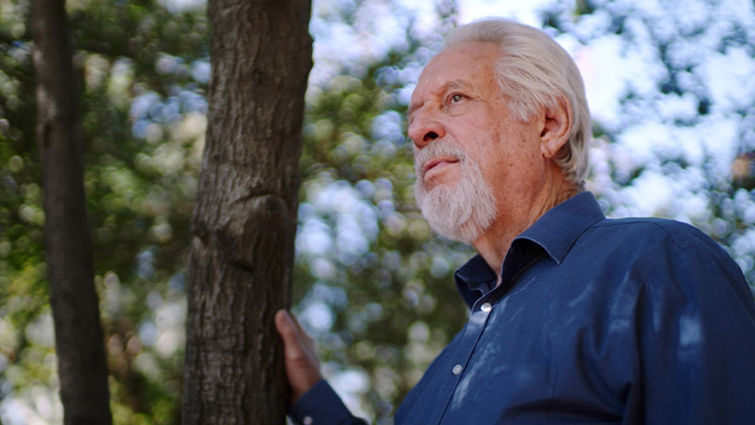
76-year-old Herbert Trafton says he feels younger, healthier, and more energetic since partnering with Loma Linda University International Heart Institute’s care team to repair one of the valves in his heart. As a result, Trafton is newly motivated to resume home renovations and projects he put off five years ago after developing serious shortness of breath from congestive heart failure.
Structural interventional cardiologists at the International Heart Institute have performed hundreds of mitral transcatheter edge-to-edge valve repairs (M-TEER), minimally invasive procedures to treat failing mitral valves and restore proper blood flow in the heart. Yet Trafton’s M-TEER stood out as a “complex, highly technical case” because the blood leakage originated from the corner of the mitral valve, an unusual location, says Amr Mohsen, MD, who performed the procedure with Jason Hoff, MD.
Although Mohsen says there were no guarantees the M-TEER procedure would remedy Trafton’s unique case, it was Trafton’s best chance to regain the quality of life he cherished before. Together, Trafton, Mohsen, and Hoff decided to move forward with a procedure that concluded in success.

“If we hadn’t performed the M-TEER, Mr. Trafton would have continued to be limited in his lifestyle with a lower quality of life as his heart failure worsened and the disease progressed,” Mohsen says.
Aside from Trafton’s duties as a father of four, grandfather of seven, and great-grandfather of three, he says he enjoys renovating his three-acre property bordering the Colorado river. Activities Trafton enjoys — repairing structures, pruning trees, planting fresh vegetables, and taking long walks on his property with his dog, Bryce Canyon — had become increasingly difficult starting in 2018 when he first noticed shortness of breath.
Symptoms worsened throughout the years. Trafton eventually sought medical care and was diagnosed with mitral valve prolapse, a genetic disease affecting the mitral valve between the left heart chambers. Mohsen says the condition causes blood to flow through the mitral valve in both directions instead of one, depriving the body of oxygen while sending blood backward into the lungs. Over time, Trafton’s mitral valve prolapse led to the development of congestive heart failure.
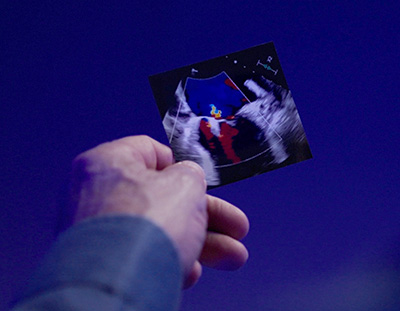
Given this complex diagnosis, Trafton’s cardiologist referred him to LLU International Heart Institute, where he could benefit from an array of advanced technologies and a higher level of care. There, the cardiothoracic surgery team deemed open heart surgery too high-risk for Trafton, given his existing heart complications. Shortly after, Trafton met structural interventional Mohsen and Hoff and decided to undergo M-TEER.
“I knew it would be a challenging procedure, but I told Dr. Mohsen and Dr. Hoff, ‘I've had a blessed life, and I've been fortunate, so I consider myself on bonus time. Let’s take the best shot.’”
The minimally invasive M-TEER procedure involves the insertion of a small tube through a large vein in the patient's leg to access the heart. The physician guides a small MitraClip device up the leg vein until they reach the heart’s mitral valve. Unlike in open heart surgery, a M-TEER procedure is done on a beating heart, Mohsen says. He and Hoff guided the device to the mitral valve by using expert imaging guidance from Ramesh Bansal, MD, director of the echocardiography department.
Typically, the device is designed to clip in the middle of the heart valve, a common area for leakage. But in Trafton’s case, Mohsen says he and Hoff carefully maneuvered the device, instead clipping it unconventionally onto the corner of the mitral valve where the leakage was.
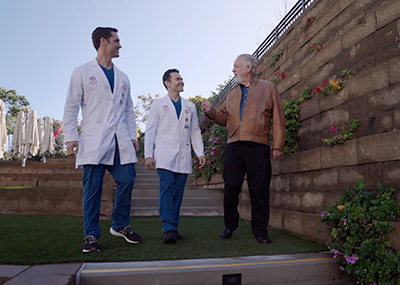
“This procedure was very successful, and we finished with just one clip," Mohsen says. "We expect Mr. Trafton’s clip to hold for a long, long time.”
Within two weeks, Trafton says he noticed a vast improvement in his energy levels and breathing ability. The trek from the parking lot to Allegiant Stadium — a path he knows well from attending countless Raiders games — once left him breathless. Now, he says the walk is a “piece of cake.”
“For several years before this procedure, I was told, ‘don’t be sedentary, but don’t do too much,’” says Trafton. “Now my mindset is, ‘do whatever you want to do.’ The clock seems to have been turned back.”
Mohsen says the rapidly growing field of structural interventional cardiology constantly opens new doors for patients like Trafton, who may not have had life-saving options.
“Patients with complex valve disease still have options, especially in high-volume care centers with advanced training like our International Heart Institute,” Mohsen says. “It has been gratifying to find solutions that help these patients. I always encourage patients and physicians just to ask, even if they have been told there are no options. Maybe we have an option.”



